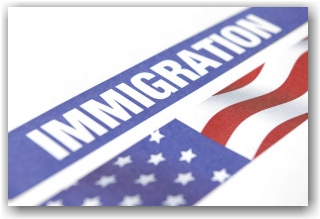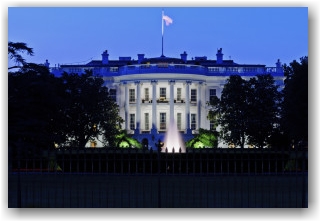
Government enforcement activities at businesses significantly increased in 2018 and are anticipated to continue in 2019. The Immigration and Customs Enforcement (ICE) division of the Department of Homeland Security (DHS) conducted close to 6,000 audits last year compared to 1,360 audits in 2017. This is consistent with the Trump administration’s focus on immigration enforcement, and it will continue this year.
The whole purpose of the I-9 form is to ensure that you are hiring a legal workforce. In this article we will unpack Section 3 of the I-9 form, and offer some guidelines that will help you navigate when you must use this part of the form.
Employers must complete Section 3 of the I-9 Form when:
- Your employee’s employment authorization or documentation of employment authorization has expired.
- Your employee is rehired within 3 years of the date that Form I-9 was originally completed.
- Your employee has a legal name change.
When completing Section 3, you must also complete the last name, first name and middle initial fields in the Employee Info from Section 1 area at the top of Section 2.
When your employee’s employment authorization or, in most cases, employment authorization documentation (see below for more information) expires, you must reverify to ensure your employee is still authorized to work. To find out if your employee’s employment authorization expires, look in Section 1 for the date that employment authorization expires and in Section 2 for the date that the employment authorization document expires.
The employment authorization expiration date provided by your employee in Section 1 may not match the document expiration date recorded under List A or List C in Section 2. The earlier date must be used to determine when reverification is necessary.
We suggest that you remind employees, at least 90 days before the date reverification is required, that they will be required to present a List A or List C document (or acceptable receipt) showing continued employment authorization on the date that their employment authorization or documentation whichever is sooner, expires. If your employee has a Form I-765, Application for Employment Authorization, pending with USCIS, and the application has been pending for 75 days, your employee may call the USCIS Contact Center or schedule an InfoPass appointment at a local office to request expedited processing.
Employers should not reverify:
- U.S. citizens and non-citizen nationals
- Lawful permanent residents who presented a Form I-551, Permanent Resident or Alien Registration Receipt card for Section 2. This includes conditional residents.
- List B documents
Unless reverification does not apply (for the situations stated above), then when your employee’s employment authorization or employment authorization documentation expires your employee must present unexpired documents from either List A or List C showing authorization to work. Receipts for a lost, stolen or damaged document are acceptable for reverification.TEmployers should not reverify:
To complete Section 3, you must:
- Examine the unexpired documents to determine if they appear to be genuine and to relate to your employee. If you feel the document does not reasonably appear to be genuine and relate to your employee, allow your employee to present other documentation from the List of Acceptable Documents.
- Record the document title, document number and expiration date, if any.
- Sign and date Section 3.
If you previously completed Section 3, or if the version of the form you used for a previous verification is no longer valid, you must complete Section 3 of a new Form I-9 using the most current version and attach it to the previously completed Form I-9.
Rehires
If you rehire your employee within 3 years of the date that a previous Form I-9 was completed, you may either complete a new Form I-9 for your employee or complete Section 3 of the previously completed Form I-9.
To complete Section 3 for rehires, you must:
- Confirm that the original Form I-9 relates to your employee.
- Review the original Form I-9 to determine if your employee is still authorized to work, including whether employment authorization documentation presented in Section 2 (List A or List C) has since expired (or have been auto-extended). Use the guidelines to determine if reverification applies.
- If your employee is still authorized to work and his or her employment authorization documentation is still valid, enter the date of the rehire in the space provided in Section 3.
- If your employee is no longer authorized to work or the employment authorization documentation has since expired and requires reverification, request that the employee present an unexpired List A or List C document. Do not reverify an employee’s List B (identity) document. Enter the document information and the date of rehire in the spaces provided in Section 3. If the current version of Form I-9 is different from the previously completed Form I-9, you must complete Section 3 on the current version.
- Sign and date Section 3.
Entering Dates in Section 3
Section 3 includes three spaces to enter dates:
- If you rehire a former employee: enter the rehire date that your employee begins employment for wages or other remuneration, which can be a future date, if necessary, in Block B.
- If you reverify your employee: enter the date the employee’s new work authorization document expires in Block C.
- When completing Section 3 for any reason: enter the date you complete and sign the attestation.
Recording Changes of Name and Other Identity Information for Current Employees
You are not required to update Form I-9 when your employee has a legal change of name. However, it is recommended that you maintain correct information on Forms I-9 and note any name changes in Section 3. Although Form I-9 regulations do not require employees to present documentation to show that they have changed their name, you should take steps to be reasonably assured of your employee’s identity if there has been a legal name change. Such a change may call into question your continued ability to rely on the documents your employee previously presented, as they reasonably relate to the employee. These steps may include asking the employee to provide documentation of a legal change of name to keep with his or her Form I-9, so that your actions are well-documented if the government asks to inspect this employee’s Forms I-9.
You may encounter situations other than a legal change of name where an employee informs you that his or her identity is different from the time Form I-9 was previously completed. If your employee informs you that the name, date of birth, or Social Security number is substantially different from what he or she previously provided on Form I-9, and is unable to provide evidence linking the new information to the identity previously used you should:
- Complete a new Form I-9
- Write the original hire date in “The employee’s first day of employment (MM/DD/YYYY)” space in Section 2; and
- Attach the new Form I-9 to the previously completed Form I-9
- If the Section 1 information has not substantially changed but the employee has offered different evidence of work authorization, then you should examine the documentation to determine if it appears to be genuine and to relate to your employee presenting it. If so, complete Section 3 of the previous Form I-9. If the current version of Form I-9 is different from the previously completed Form I-9, you must complete Section 3 on the current version
For more information: Handbook for Employers
Online Learning Resources
Contact our office; we are experts in I-9 Consulting and Audits or call 562 612.3996.










